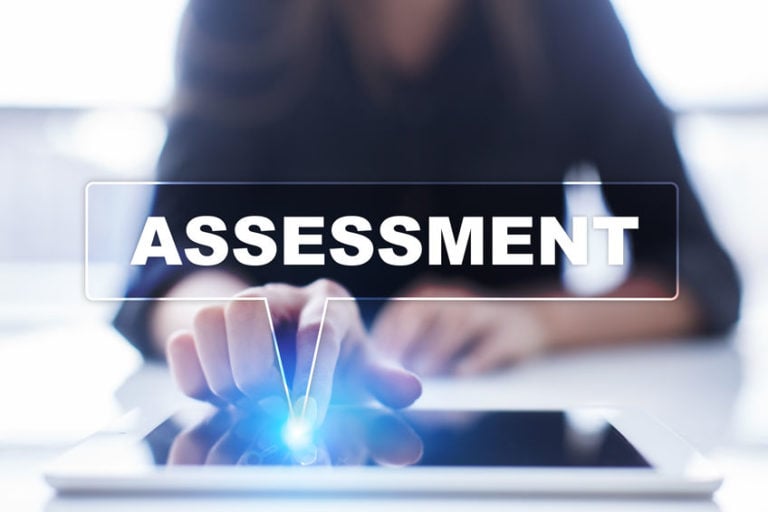New training trends continue to emerge since Covid-19 was first recognised as a global threat. The 2021 Australian Employer Survey report from NCVER (regarding ASQA/VET skills training courses) was released in October 2021. The survey indicates that Employers experienced an increased need for new employee training programs since the pandemic began. This is not surprising, but let’s review how employee training needs are changing in relation to the Covid-19 pandemic.
How this training is delivered varies from business to business and from sector to sector.
- The majority of businesses reported using informal training sessions (such as on-the-job training) as well as formalised internal training programs, compared to other training options such as accredited skills training packages offered by ASQA/VET in Australia.
- However, over half of the limited number of surveyed employers use VET/ASQA accredited skills training for employees.
- The figure was also up this year, likely in response to more government subsidies for training programs; although in the past these taxpayer-funded subsidies led to poor enrolment practices by RTOs intent on raising profit margins, and consequently, higher ‘drop-out’ (incompletion) rates.
Overall, report data suggests the majority of surveyed employers incorporate internal training programs, industry courses, and/or informal training as well as using accredited courses when required. They report a roughly 75% satisfaction rate with accredited skills training programs (VET qualifications).
In terms of employee skills training needs:
Over 44% of businesses surveyed by NCVER in relation to ASQA reported new employee training needs in relation to the pandemic. Various surveys and industry reports indicate many industries are still developing best-practice delivery methods for Covid-safety training, including ensuring their internal training programs continue to be offered to employees.

We’ll explore key ‘takeaway messages’ from that NCVER report later in this article.
First, let’s look at education trends in the GMP education sector.
Including how the world’s best GMP trainer, Maria Mylonas, trained over 2,000 pharmaceutical industry employees — using virtual training delivery methods — during lockdown!
New Employee Training Needs in the Pharmaceutical Industry
Similar to other businesses, Pharmaceutical companies had new training requirements in relation to the pandemic.
When the pandemic first started, the pharmaceutical industry needed to cope with rapid increases in product demand.
Along with supply chain disruptions and the need to qualify new GMP suppliers, this meant the pharmaceutical industry had to adapt rapidly to virtual training sessions.
GMP compliance training expert (PharmOut’s Director of Learning and Development, Maria Mylonas) has been inundated with GMP training requests in the months subsequent to the pandemic.
- Maria, who lives in the world’s ‘most lock-downed city’ — Melbourne, Australia — has been working from her home-based office since March 2020.
- But that didn’t stop her from:
- delivering over 1,000 live-streamed hours of GMP education courses
- educating just over 2000 participants ‘live’ on video through PharmOut’s many interactive GMP workshops.
She also initiated and oversaw the development of new online GMP training courses to help pharmaceutical companies meet their training needs, at any time (and from anywhere in the world).
This resulted in over 52 online GMP education topics (self-paced training) being offered to pharmaceutical industry professionals around the world.
Visit the GMP store for certificate GMP compliance courses available online.
Read the business case for online training as part of organisation-wide training programs.
A new era of employee training – Covid-safety first
But there’s a new era in employee training that organisations are starting to wrangle with.
That’s how to best train employees how to stay safe during a global pandemic that’s killed nearly 5 million people to date, including numerous healthcare workers. (Source: WHO).
Let’s briefly outline these new employee training needs — ‘pandemic safety training’ — that can help:
- reduce risks to employee health and longevity (including their family members and friends)
- reduce risks to public health and longevity (members of the community including clients and customers)
- prevent further business interruptions
- fulfil Government mandates and industry requirements
Then we’ll explore a few highlights of the 2021 Employer Survey by VET/ASQA regarding Employers use (and opinions) of VET training programs and accredited skills training programs.
For more on ASQA and VET, watch the Australian VET system explanation video on YouTube.
New personnel training needs (skills training and education industry trends)
Covid-19 stands for a “severe acute respiratory syndrome coronavirus 2 (SARS-CoV-2), and the resulting COVID-19”. The ‘Covid-19’ pandemic was first publicised in the media in December 2019. The first identified outbreak(s) were in China; and while there was a delay in reporting the outbreaks, the world was notably unprepared.
Once Covid-19 outbreaks were in progress:
- December & January — peak holiday periods — resulted in large numbers of international travellers crossing border after border after border.
- It didn’t take long for SARS-CoV-2 to wreak havoc across the world.
- Within a few months, several of these borders closed — and people were issued orders to ‘stayed safe in place’ (lockdowns).
But the virus showed no mercy.
“As of Jan 18, 2021, an estimated 95 million people worldwide had been infected with the virus, with about 2 million deaths.1” – Source: The Lancet.
Pharmaceutical companies had new training requirements in relation to the pandemic.
- They adapted to new training delivery modalities for their employees quite rapidly.
- GMP training experts were in high demand.
- But this wasn’t the case with other education providers.
In terms of the Australian skills training and higher-education industries, Covid-19 became recognised as a significant threat to health and longevity a few weeks before the 2020 semesters began.

Many Universities and registered training organisations (RTOs) did not adapt as quickly as the highly-contagious SARS-CoV-2 scenario warranted.
Campuses became some of the earliest ‘super spreader’ environments in Australia.
As the threat of virus transmission in training centres and elsewhere grew, education programs were temporarily paused. They were eventually moved into ‘online training delivery modalities’ (or ‘hybrid training’ sessions).
This meant that Educators – RTO Instructors and University Lecturers, Professors and PhD Supervisors – had to adapt to communicating with students via ZOOM, Blackboard, or other digital education technologies.
This wasn’t typically their forte.
This led to an urgent need for ‘train the trainer’ sessions to upskill Professors and other instructors in digital delivery skills.
At the start of the pandemic, employee training needs grew to include ‘train the trainer’ sessions in digital training delivery modalities.
Course facilitators and University professors needed training in:
- digital education technologies
- learner engagement in digital environments
- ways to manage ‘practical experience’ and ‘practical assessment’ components in a Supervised environment without face-to-face interactions
Meanwhile, on-campus education sessions (or alternatively, significant education interruptions) continued longer than they should have.
- Many were hampered, however, by a lack of international students — students who never returned after a mid-summer break when Australia’s borders were slammed shut in response to Covid risks.
- The fact was that many people in Australia, particularly those without a science or medical background, didn’t recognise the seriousness of the virus until many more millions had died.
Additionally, as in a recent article about online education in response to the pandemic, Universities were never touted as being ‘rapid adopters’ of new technologies, including online learning modalities and hybrid education programs.

The Future Of Education and Skills Training (post-pandemic)
As we move into 2022, most education providers have overcome these challenges.
It will be some time before we are through with this pandemic (or the pandemic is through with us).
Many learners and instructors still struggle with the challenges of purely online training sessions.
However, as more people get vaccinated, there is an expectation that ‘hybrid’ education delivery is going to become the new model of education in relation to the pandemic.
The Hybrid Model of Education (in brief):
- Online self-paced instruction (24/7) prior to and/or in place of face-to-face sessions.
- Interactive online sessions with a facilitator or professor (live-streamed courses) such as those led by Maria Mylonas for the pharmaceutical sector
- Practical face-to-face sessions or assessments under strict safety protocols (when group gatherings are not in conflict with Government health and safety mandates)
- Flexibility and adaptability due to rapidly changing environmental risks, including new information emerging in relation to virus transmission risks (mutations/strains)
Training of new employees in business settings during a pandemic
What about safety training for business personnel?
One of the key changes in relation to new employee training programs (and other education programs) is the additional requirement for safety training — training specifically designed to ensure that:
- management and employees implement prevention measures in working environments to reduce Covid-19 transmission risks
- employees understand how to best manage interactions with clients and customers and the broader community
This new training requirement for employees is in direct relation to the risks posed by Covid-19; and the fact that — thus far — the population is not yet fully vaccinated and break-through cases will occur.
Additionally, many countries do not yet have adequate vaccine supplies. As schools, businesses, and borders reopen in Australia, this heightens risks to health and safety across nearly every working environment.
Given the factors listed above, Covid-19 risks require new employee training requirements for safety protocol training.
What do employees need to learn to stay safe, when returning to workplaces during the pandemic?
As a basic foundation for employee safety training in the wake of Covid-19, new employee training requirements would cover issues such as:
- employee safety training (personnel safety procedures)
- wearing PPE
- social distance rules
- decontamination procedures
- handling aggressive and uncooperative members of the public
- public safety training
- enforcing QRCODE check-ins
- ensuring customers who enter a business meet the current vaccination requirements and wear masks where mandated
- keeping vulnerable customers safe from unvaccinated people and violent ‘anti-vaxxers’
- other safety measures depending on the industry and job role
What’s been the employee safety training scenario, thus far?
Industries that already provide some forms of Covid-19 safety training to employees include:
- pharmaceuticals
- hospitals
- healthcare facilities
- surgery centres
- dental offices
- pharmacies
- veterinarian clinics
- public transport workers
- Governments (State and Federal)
- delivery services and postal employees
Industries currently adapting their employee training programs to include new ‘Covid-19 safety’ training include:
- aged-care centres
- in-home service providers
- grocery stores
- retail stores
- hospitality
- construction
- travel
- other sectors
Overall, there’s a growing need to train employees to adhere to new personal safety measures and public safety mandates. This is necessary to reduce the risks of working during a pandemic.
Some of this employee training must be performed online, for safety reasons as well as economic reasons, given the high number of people that need to be trained.
Difficulties implementing new employee training for Covid-19 protections
Training employees to consistently protect themselves — and their colleagues — from virus transmission has proven challenging.
This is certainly the largest, broadest behavioural change initiative ever witnessed in our lifetime.
An even bigger challenge for employee training programs includes training employees how to ensure customers (visitors, and other members of the public) consistently adhere to:
- personal safety procedures
- company health and safety policies
- public safety mandates.
It requires training employees to use best-practice methods to ensure visitors, customers, and clients adhere to safety policies in relation to:
- QRCODE check-in apps
- wearing masks (when mandated)
- keeping socially distanced (when mandated)
This includes training employees to check for vaccination certificates (where mandated); and how to handle aggressive, covid-denying members of the public.
Training front-line workers to handle public safety concerns
Most front-line retail workers feel uncomfortable — and inadequately trained — to enforce public health protections.
Even hospital teams are finding it incredibly difficult to gain mask-wearing compliance with uncooperative members of the public,
Sadly, some of the public remain dangerously unfamiliar with the realities and risks of contracting Covid-19 (but won’t be unfamiliar for very long once borders open).
That is, perhaps, the greatest challenge for employee safety training during a pandemic. And one which, unfortunately, is not readily solved.
Pandemic related safety training programs for employees

Summary: Pandemic-related personnel safety procedures for different business sectors are still in development.
- Hospitals have put in additional safety training and protocols for personnel, patients, and visitors.
- Most other businesses are implementing new safety procedures, including attendance limits (voluntarily or due to regulatory advice) and new guidelines on gatherings (e.g., eating and drinking in separate locations from other employees, to avoid disease spread during break times).
Public health mandates are also evolving as businesses, and borders, begin to reopen in Australia and around the globe.
Some industries are far ahead of others; and are motivated to instigate employee safety/public safety protocols as Australia begins to re-open its businesses, retail centres and travel routes.
However, as the ‘re-opening of Australia’ unfolds, there are many yet-to-be-vaccinated people, including populations of neighbouring countries. Many challenges remain.
Other Training Industry Trends
Let’s briefly look at other emerging trends in skills training sectors from the NCVER/VET training course report.
What does the NCVER 2021 Employer Survey from VET/ASQA reveal in terms of training in employer markets?
“COVID-19 had a big impact on employers’ training needs, with 44.0% of employers having new training requirements due to the pandemic. Of these, 83.6% had new training requirements to effectively or safely operate in the COVID environment, 70.8% in health and safety, and 68.0% in infection control. Over half (52.1%) chose the type of training they used because of an immediate need to respond to rapidly changing needs, and a third (34.4%) based on its availability.” Source: Simon Walker, NCVER’s Managing Director.
About the VET sector Employer Survey report for 2021
- This Australian employer survey takes place every 2 years.
- For the 2021 survey, 5,615 Australian employers were surveyed between February and mid-June 2021, with results covering the preceding 12-month time frame.
Note: The ABS reports that the number of businesses in Australia exceeds 2.4 million (actively trading businesses) as of 2021; so the Employer Survey by VET (ASQA) of only 5,615 employers covered a relatively small percentage of businesses.

- This employer’s survey, administered by NCVER in relation to VET (ASQA) skills training qualification packages, “collects information on the various ways employers meet their skill needs” in relation to ‘accredited training’ and other forms of training.
For example, the survey aims to collect data on:
- employers recruiting workers with pre-existing vocational qualifications
- employers who employ apprentices and trainees
- employers who offer existing personnel opportunities or financial support to complete nationally recognised training through an accredited program (e.g., if they are listed as an RTO as a dual RTO-business venture) and/or programs offered through various VET-recognised education providers
- offering new employees and other personnel other types of training
- informal training
- formalised internal training (proprietary/company-specific) and/or
- industry-specific training (for example, online GMP training)
In brief, the “2021 Survey of Employers in relation to the VET system” revealed:
- Vocational qualifications: 40.2% of employers had jobs that require vocational qualifications (up 6.0 percentage points from 2019)
- Accredited VET training: just over half (56.6%) of employers used accredited training to meet their training needs,
- Satisfaction: Approximately 3 in 4 (74.3%) were satisfied that vocational qualifications provide employees with the skills they need for the job, meaning over 25% were not satisfied (this gap would thereby likely be met through internal training programs and/or by actively recruiting individuals who had industry-specific experience, and by offering other forms of education such as industry-leader training courses and Forums).
Read the full 2021 Employer training survey results here.






